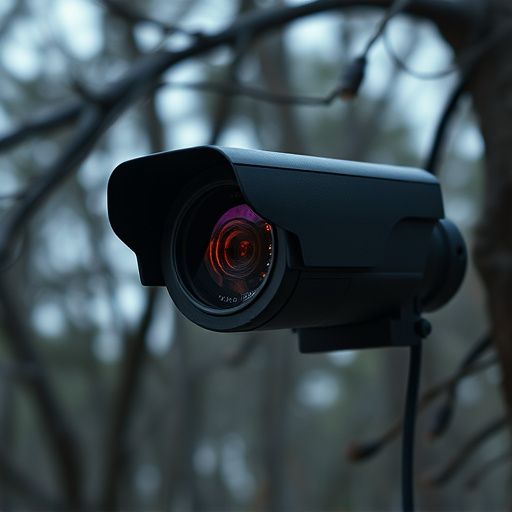Understanding hidden camera detection technologies is vital for enhancing home security. Advanced methods include visual, thermal, and electromagnetic sensing to uncover covert recording devices in everyday objects or walls/ceilings. Specialized cameras detect infrared signals and software analyzes video feeds for anomalies. Security professionals use high-res cameras and thermal imaging for thorough inspections, focusing on common camera placement. RF and Infrared scanning detect miniature cameras by analyzing electromagnetic signals and heat emissions. Balancing security with privacy is crucial; legal boundaries and consent must be respected when implementing best hidden camera locations within homes.
Uncover the secrets behind hidden recording devices with our comprehensive guide. Learn about cutting-edge signal scanning methods used by security professionals to detect even the most concealed cameras. From visual scanning techniques to advanced RF and infrared technologies, we explore the tools and tactics for enhancing home security. Discover ethical considerations and stay informed about best practices in hidden camera detection, ensuring peace of mind in your living spaces.
- Understanding Hidden Camera Detection Technologies
- Visual Scanning Techniques for Security Professionals
- Advanced RF and Infrared Scanning Methods
- Ethical Considerations in Signal Scanning Practices
Understanding Hidden Camera Detection Technologies
Understanding Hidden Camera Detection Technologies is a critical step in enhancing home security, especially given the variety of best hidden camera locations. Advanced technologies now exist to help identify these surveillance devices, which can be disguised as everyday objects or embedded discreetly within walls and ceilings. These detection methods leverage a combination of visual, thermal, and electromagnetic sensing capabilities to uncover potential threats.
One popular approach involves using specialized cameras that can detect infrared signals, often utilized in hidden camera setups. By scanning for unusual heat signatures or electrical interference, these devices can pinpoint the presence of covert recording equipment. Additionally, advanced software algorithms analyze video feeds for any anomalies, such as subtle variations in lighting or pixel patterns, indicating the presence of a hidden camera. This multi-layered approach ensures comprehensive protection against the ubiquitous threat of surveillance in both residential and commercial settings.
Visual Scanning Techniques for Security Professionals
Security professionals employ various visual scanning techniques to detect hidden recording devices, focusing on areas where cameras are most likely concealed. One method involves meticulous inspection using high-resolution cameras and zoom lenses to peer into tight spaces like wall cracks, corners, and recesses. This process requires a keen eye for detail and an understanding of common camera placement strategies, such as best hidden camera locations in homes.
Another technique leverages thermal imaging technology, which can detect the heat signature of electronic devices, including hidden cameras. By scanning for anomalous temperature patterns, security experts can uncover surveillance equipment tucked away in plain sight or strategically placed to record without suspicion. These methods are crucial components of a comprehensive home security strategy, ensuring that personal spaces remain private and protected from unwanted surveillance.
Advanced RF and Infrared Scanning Methods
In the quest for robust home security, detecting hidden recording devices often requires sophisticated techniques. Advanced RF (Radio Frequency) and Infrared scanning methods have emerged as powerful tools in this arsenal. These cutting-edge technologies enable security professionals to identify and locate miniature cameras, often disguised as everyday objects, by analyzing electromagnetic signals.
RF scanning involves emitting radio waves and measuring their interactions with nearby devices. Hidden cameras, equipped with RF transmitters, can be detected by their unique signal signatures. Infrared scanning, on the other hand, utilizes infrared light to uncover heat-emitting components within devices. This method is particularly effective for locating small, battery-powered cameras that may be difficult to spot through visual inspection, ensuring that your home remains a secure sanctuary free from unwanted surveillance.
Ethical Considerations in Signal Scanning Practices
As technology advances, so do methods for detecting hidden recording devices, raising important ethical considerations. While enhancing home security is a valid concern, signal scanning practices must respect privacy rights. Unapproved or invasive monitoring, especially in domestic settings, can be seen as a violation of civil liberties. Individuals have a reasonable expectation of privacy in their homes, and any signal scanning efforts should adhere to legal boundaries and obtain appropriate consent.
Focusing on best hidden camera locations within homes may seem harmless, but it’s crucial to remember that these devices are powerful tools capable of capturing sensitive information. Ethical guidelines recommend a balanced approach where security measures are implemented without compromising privacy. Homeowners seeking protection from hidden threats should explore legal options and consult experts who can provide solutions tailored to their needs while respecting personal freedoms.
Hidden camera detection has evolved from rudimentary visual inspections to a sophisticated art, employing diverse technologies like RF and infrared scanning. As security professionals equip themselves with these advanced methods, it’s crucial to balance effectiveness with ethical considerations, ensuring privacy while safeguarding against malicious devices in what were once thought to be secure spaces, such as the best hidden camera locations in homes. By staying informed about the latest signal scanning practices, individuals can fortify their home security and protect their personal spaces from unwanted surveillance.
